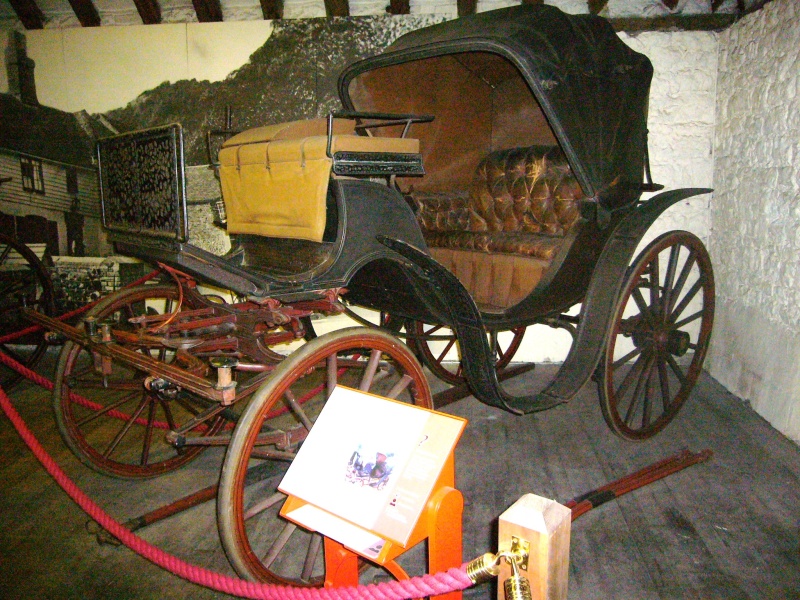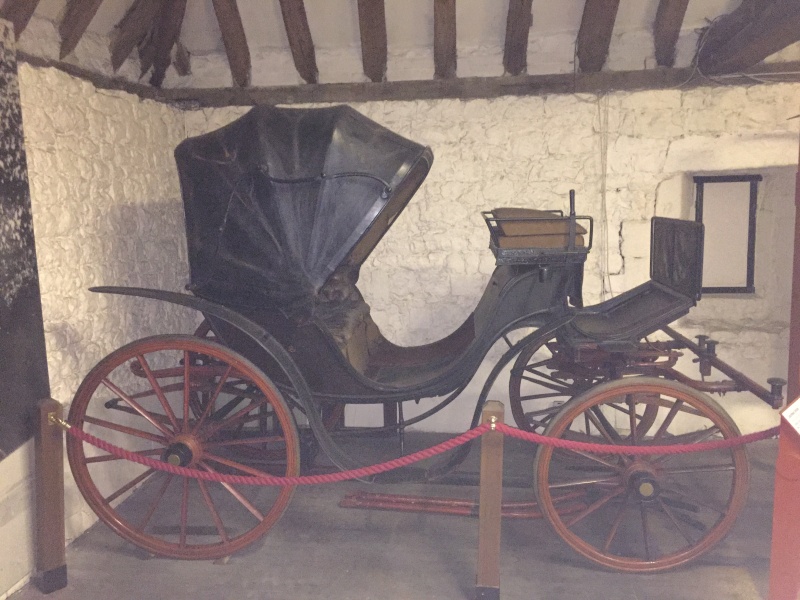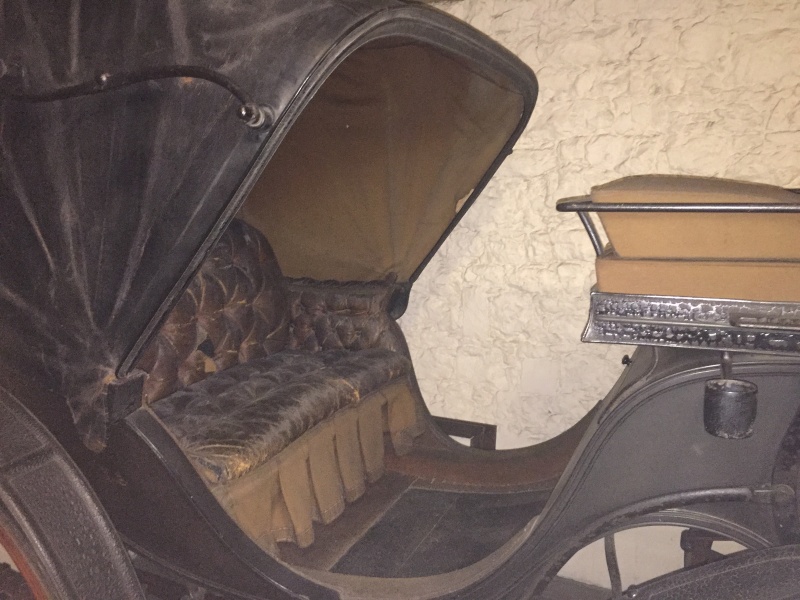Use the dots above to scroll through images.
Listed in 1 collection
Listed at 1 museum
Listed for 1 maker
Quick Details
Carriage Type
Panel Boot Victoria
Date of Production
circa 1900
Accession or Inventory Number
1994.85.3
Materials used
Paint, Wood, Iron, Leather, Wool Box Cloth, Brass, RubberSummary of Panel Boot Victoria
A superb Victoria built by one of the top London coachbuilders Barker and Co. It doesn’t get much better this this in terms of quality. This example has a body with a curved profile and is sprung on elliptic springs. There is a fold down seat in the boot under the coachman’s seat which gives the carriage its name of ‘Panel Boot Victoria’.
Victoria’s were introduced by the future King Edward VII from Paris and were made popular by the patronage of Queen Victoria who favoured this carriage style. Victoria’s are open carriages with a leather head to give some protection to the occupants against the sun. They were driven by a coachman with a footman sitting next to him. The low comfortable body carries two, or occasionally three if it has a folding seat stowed in the back of the boot. The low access, elegant style and comfortable seating made the Victoria very popular with ladies for fine weather use.
Dimensions
Height: 7ft 2”
Length: 11ft 2”
Width: 5ft 2”
Full description
A beautiful ,stylish and excellent example of a Panel Boot Victoria built by one of the best coach builder’s to have existed. This carriage has a few little features that add a little more class and elegance to its design.
For a Victoria the body is quite high from the ground. The owner of this carriage must have been of high social standing as they would have wanted to be seen. Victoria’s were partly designed to be easy to access for ladies who during the latter part of the 19th century wore full skirts. Being higher this carriage would be slightly more challenging to access, but having been built by a top coach builder, the steps are placed at the perfect height for two manageable steps up for the ladies.
The body is of a nautilus shell shape and quite shallow. The floor sweeps upwards to the seat riser which has extra style being shaped in a curve on the upper side as well as the underside with the rear of the coachman’s seat being supported on small iron brackets that are hardly noticable . A fold down seat is stowed in the boot to provide extra seating. This is upholstered in buttoned brown leather.
The main seat is also covered in buttoned brown leather and has a large seat back and padded sides. There is a pleated seat valance in an almost mustard yellow colour wool box cloth. The same material lines the leather head and covers the coachman’s seat cushions and valance. The folding leather head would provide enough shelter from a light breeze or bright sunshine. It is in rather good condition and has hinged iron arms which are painted black and a patent leather front edge with painted brass beading.
The coachman’s seat has a single seat rail and a leather skirt with brass beading. The iron brake handle is on the offside. It attaches to the brake arm that follows the contours of the shape of the body of the carriage, all seamless and carefully designed. Lamp brackets are bolted to the underside of the coachman’s seat. A heel board conceals a stowage area under the seat. The foot board has a gentle slope and is carved on the edges, it is surmounted by a leather dashboard. On each side of the foot board is a step with rectangular jagged tread.
A defining feature of the Victoria is the sweeping splashguards which meet in the centre at the step. On this carriage the front splashguards are bolted to the underside of the seat riser and the rear ones, which finish beyond the back of the carriage for added extra style, are bolted to the side and rear panels of the body. The step has a large square tread supported on an iron bracket that has two knops in the middle.
The forecarriage is very fine and beautifully constructed with scrolled ends to the components. There is a splinter bar with roller bolts and provisions for a pole for a pair of horses and fittings for a pair of independent shafts for a single horse. Both the pole and the shafts are displayed with the carriage. The pole has a padded leather covering half way along and iron rings at the end for the attachment of the pole straps. The shafts are served with leather at the ends and at the point where the breeching staples are fitted.
This Victoria has 12 and 14 spoke English pattern wheels with rubber tyres and on collinge patent axles. The front wheel hubs are jagged for use as a step to access the coachman’s seat. Both front and rear axles are straight. Sprung on elliptic springs at the front and back.
The body, seat riser and footboard are painted black with red lining. The under carriage and wheels are painted red with black lining. Metal components such as the brass beading and seat rail are painted black. A very smart combination.
Inscriptions
On the axle caps: BARKER & Co CHANDOS ST
Condtion report
A lovely carriage in original condition. Paintwork, leatherwork and upholstery is all original. The seat upholstery is quite worn and would benefit from the stabilisation. The lining of the leather head is also a little fragile and needs some attention.
Access information
This Panel Boot Victoria is in the care of the Tyrwhitt-Drake Carriage Museum
Maidstone Museum and Art Gallery
St Faith's Street,
Maidstone
ME14 1LH
Picture credit
Maidstone Museum and Bentliff Art gallery / Amy Bracey / Robert Lovell

 Carriage Foundation
Carriage Foundation

